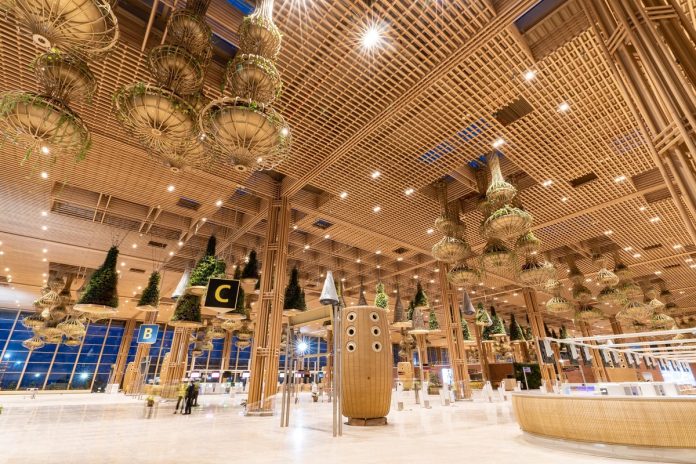As part of his two-day journey to four Southern states, Prime Minister Narendra Modi will visit Karnataka’s capital Bengaluru on Friday (11 November) to inaugurate the Terminal 2 of Kempegowda International Airport.
Terminal 2 of Kempegowda International Airport at Bengaluru was built at a cost of around Rs 5,000 crore to double the passenger handling capacity of the airport to five to six crore passengers per annum, from the current capacity of about 2.5 crore.
During his Bengaluru visit, PM Modi will pay floral tributes to the statues of saint poet Sri Kanaka Dasa and also to Maharshi Valmiki at Vidhana Soudha and also flag off Vande Bharat Express and Bharat Gaurav Kashi Darshan Train at KSR railway station.
After inaugurating Terminal 2, the prime minister will unveil the 108 feet bronze statue of Nadaprabhu Kempegowda who is the founder of Bengaluru city.
Conceptualized and sculpted by Ram V Sutar who also designed the Statue of Unity, 98 tonnes of bronze and 120 tonnes of steel have gone into making this statue.
The statue is on a 23-acre space at the airport, which will be a heritage park dedicated to showcasing Kempegowda. It was constructed at a cost of about Rs 85 crore.

Garden Terminal
In Oct 2018, Bengaluru International Airport (BIAL) awarded the contract to L&T’s Buildings & Factories business for construction of the T2 . The contract includes design, procurement, engineering, construction, testing and operations of Terminal 2.
American architectural firm Skidmore, Owings & Merrill (SOM) was selected for providing the design of the terminal. It chose a design for the terminal to reflect the ethos of Bengaluru as a garden city.

Billed as the garden terminal, it features trees, small gardens and ponds with local species of plants.
Passageways throughout the terminal will connect the passengers with nature. The ceiling at the entrance, check-in and security area will feature hanging planted bells. The new terminal will also feature a large indoor garden with rammed-earth walls and waterfalls, which will act as a gateway into the densely-landscaped retail area.
The three-storeyed forest belt is set to offer an unique outdoor experience for arriving and departing passengers. It will be well connected to the shopping area. The forest belt will be viewable from all main indoor spaces.
Among other things, T2 will include a multi-level car parking area and a lagoon for water recycling, apart from a multi-modal transport hub aligned to the main entrance, to which a metro station built by Namma Metro will offer connectivity to and from Bengaluru city.


